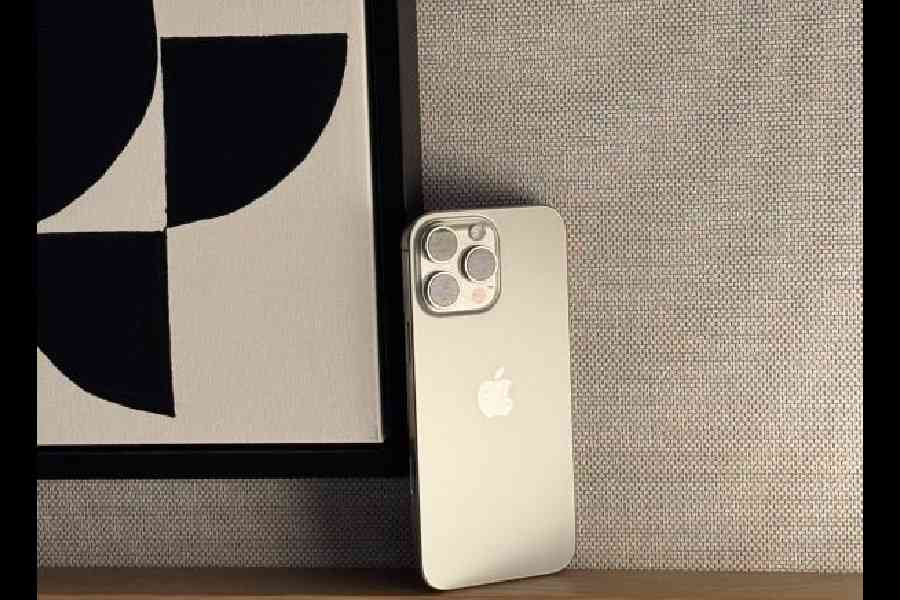Many filmmakers believe in creating content with whatever they have access to and that idea always opens up many doors. Every frame has something to say and that’s exactly what the iPhone 16 Pro celebrates.
We have already written about what the new iPhone can deliver for photographers, here’s how it can make videos shine. If you are not coming from an iPhone 15 Pro but an earlier iPhone, like the iPhone 11 Pro or the 12 Pro, the latest model can offer a big leap.
The iPhone 15 Pro added Apple Log, which boosted the phone’s dynamic range, making it more competitive with mirrorless cameras from the likes of Sony while significantly stepping back the oversharpening effect that typically plagues most smartphone videos.
Pair that with the ability to record a very high bitrate ProRes video file that could hold up well to heavy colour grading. News recently broke that Danny Boyle, the director of the movie 28 Days Later, has at least filmed parts of his upcoming 28 Years Later using the iPhone 15 Pro. That’s pretty wild stuff.
So, here’s how the iPhone 16 Pro and iPhone 16 Pro Max can make a difference to your video workflow.
Shoot 4K at 120fps
For me, coming from the iPhone 15 Pro Max, there are upgrades that I wanted to see. First, frame rates. For some years, iPhone has been offering 4K@60fps. It has been good enough to shoot films. It was time to make the leap. Personally, I don’t care about 8K because it takes up too much space, the technology has too many constraints and you don’t have enough screens to watch that kind of content.

The iPhone 16 Pro lets you shoot in 4K@120fps
The iPhone 16 Pro is capable of recording video in 4K at 120 frames per second. You can now shoot more slow motion, while still having a high-resolution video.
There is a caveat. The iPhone 16 Pro can only do this with the main camera and not the ultra-wide. I guess we’ll have to wait for the iPhone 17 Pro to see the feature develop further.
Adjust the frame rate
Another upgrade, even though it has to do with the software (iOS 18): Apple allows you to adjust the frame rate of a video after filming it. It’s something filmmakers will want to use often, especially if you’re creating content for social media. Go into the Photos app, tap the “stopwatch” icon on top, and then slow down the frame rate.
This is done in a typical Apple way of giving some control. For example, if you shoot at 4K@120fps, you can bring it down to 60fps, 30 fps and 24fps. Can this be tuned further with future updates? I think it would be great if Apple adds something like an exact frame rate, like 23.976fps (for which you can use professional video-editing software at the moment).
Ultrawide focus
In the past, Apple prioritised the main camera over the others. On the iPhone 16 Pro, the ultrawide camera has been significantly improved with the addition of a new 48MP sensor, which records video that is noticeably sharper and more detailed than the previous version. If you like the ultrawide look, especially for establishing shots, I think you will use this mode often.
Camera Control and video
Here’s an upgrade that I never knew I needed — Camera Control. Humans like buttons. Apple has cramped Camera Control with plenty of features. You can press it for different things and swipe your finger across it to adjust settings.
You can adjust a number of camera settings from here, like lock exposure and focus before recording a video.
Two settings help while recording videos. The first allows you to change exposure by swiping. Changing exposure in the native camera app without Camera Control takes a bit of effort because you have to tap on the screen and drag the control up or down, and if you already have the camera focused on something, it’s going to refocus whenever you tap on the screen. Camera Control makes that easier.

The Audio Mix feature has several options and all data is processed on the device
Second, I’m a fan of using Camera Control to swap between the ultrawide, wide and zoom lenses. No taps on the screen are required to change cameras, just swipe to change the focal length.
Also, one other thing you may not have thought about earlier: There is dedicated hardware to launch the camera. If I am with my family or at an event where I need to record something right away, the new feature helps and not make me go back to the home screen to select the camera.
Mix it up
One of the biggest upgrades to the iPhone 16 Pro involves audio. Your audience will forgive shaky footage and low resolution but the instant you start assaulting their ears with poor-quality audio, they’re going to click away and want to watch something else.
So when Apple mentioned that the iPhone 16 Pro now includes four studio-quality microphones, as well as some very powerful software customisation tools for processing this audio, I was intrigued.
Speaking about the hardware first, the iPhone 16 Pro has four microphones placed all around the phone. With the new setup, there is a lower noise floor, meaning that the audio will sound cleaner and less noisy. First, try recording in your usual setup, and you will notice a massive improvement. All background noises are tackled better and there is a lower noise floor.
The second part involves Audio Mix, which is a new setting. By default, the iPhone is going to record sort of a 360-degree audio mix from around the phone. With this audio mix tool, you can choose to use certain microphones while cancelling the audio of others, giving you directional audio without the need to put a giant shotgun microphone on the front of your phone.
Audio Mix setting is tunable. You can adjust the intensity of the mix to make it weaker or stronger. The in-frame option is going to be great if you’re recording multiple people speaking, and you only want the mic to pick up people who are in the frame. Studio setting is going to tune the microphones to sound like you’re recording a podcast in a studio. And with Cinematic audio setting, all the microphones are used. The phone mixes all the audio real-time.
Make the call

You can change the frame rate of videos shot on the iPhone
Overall, Apple has taken the video recording and editing game away from Android, especially when you consider recording in ProRes with Apple log support on the pro phone models. Add to that Audio Mix. Content creators are one more step closer to fulfilling their dream of having a one-person studio. Tweak the Godfather movie dialogue a bit: Leave the gimbal and the microphone, take the iPhone 16 Pro.
Pro talk
The iPhone 16 goes a notch higher in audio performance with four studio-quality mics for audio recordings and particularly the new Audio Mix feature, which has been well-received for its innovative integration of professional-grade audio tools into a consumer device.
Audio Mix has four modes. Standard mode presents the “normal” audio in a video file. In-frame mode highlights the audio in the frame while Studio mode offers professional-quality sound, removing all surrounding noise. Cinematic mode offers a wider cinematic sound feel.
The Audio Mix feature is particularly notable for offering spatial audio editing directly on the device. The overall sound experience is immersive. This functionality is elegantly designed, providing professional-grade tools without overwhelming casual users; this allows creators to adjust audio layers for video projects, including balancing sounds across different channels for a more immersive 3D listening experience.
I have tried out the various modes and found them effective in bringing about a variety of sound control capabilities and enhancing sound quality further. The sound adjustments across all modes is crisp and sounds good. Apple’s intention here is to bring higher-end audio-editing capabilities, typically found in professional software, to the iPhone’s built-in tools.
— Jimmy Tangree, station head, 91.9 Friends FM











